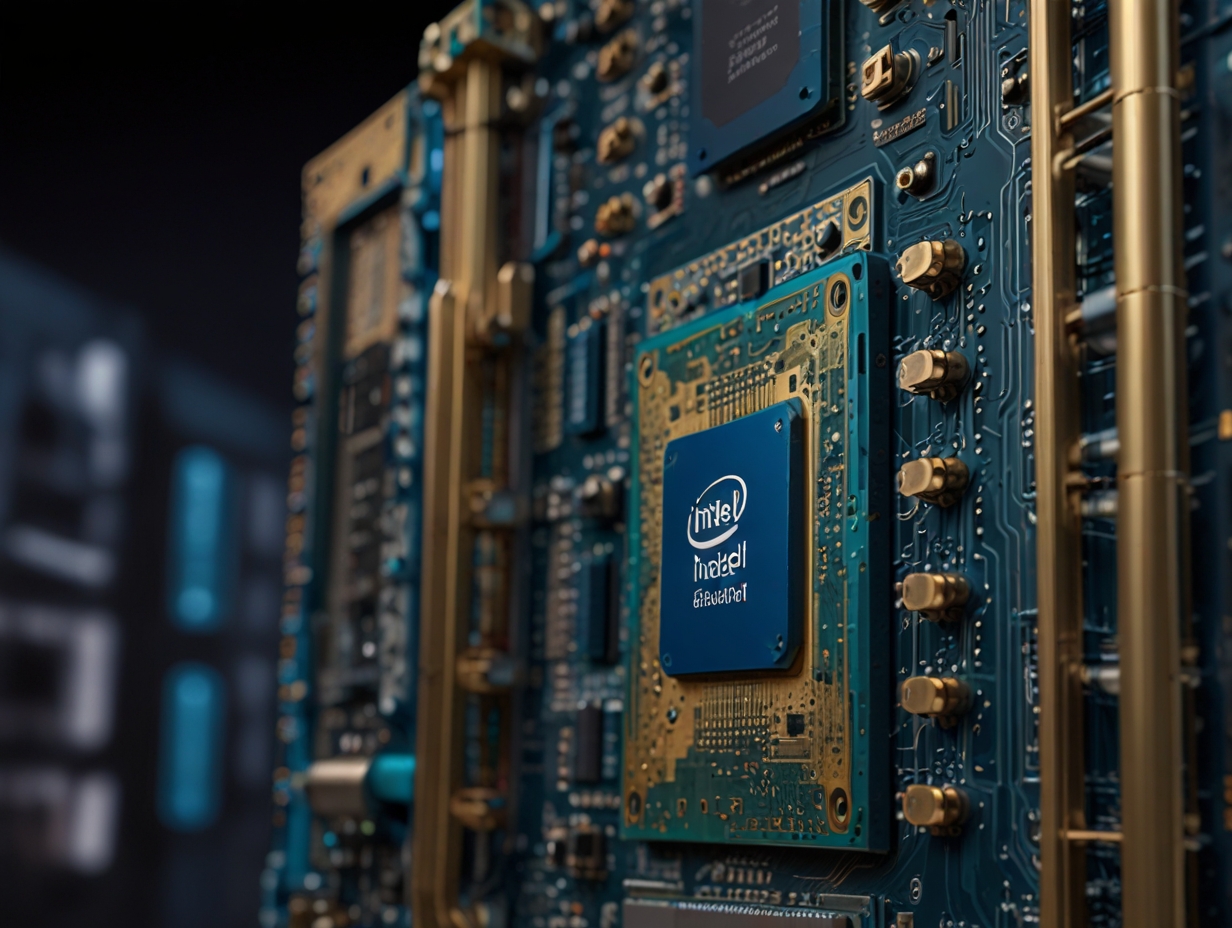Intel has unveiled the latest AI chip, Gaudi3, to capture a larger share of the AI accelerator market. The announcement was made at an event in Phoenix, Arizona, that the newest chip, Gaudi3, would be the flagship of intel AI accelerator.
This new processor is part of Intel’s strategy to position itself among competitors like Nvidia, which is the current leader in the rapidly growing semiconductor industry.
The Gaudi 3 version of our AI accelerator card, designed for broader launch in the third quarter, will advance AI systems training and operation.
Intel Gaudi 3 elevates AI capabilities
Addressing AI Technology Gap. Through Artificial Intelligence, machines can mimic human behavior by performing complex tasks, learning from experience, and dealing with uncertainty. The development of such technologies has resulted in significant changes in various fields, including healthcare, finance, and transportation.
Intel’s Gaudi 3 is engineered to improve two critical aspects of artificial intelligence technology: whether it be training AI systems through demanding data processing or executing the software decided upon using those systems.
Such a feature is found at the moment when the AI services demand has reached its highest point gaining all the attention of developers looking for powerful and efficient GPUs and chips. Despite the cutting-throat competition, Nvidia seems to have benefited from the boon with huge chunks of Intel’s ideas looking to dethrone Nvidia’s prosperity.
Yet the CEO of Intel, Pat Gelsinger, admitted that its Gaudi chip was facing the fact that other existing models could not secure its dominating position in the market. Although Gelsinger mentioned about consumer pressure to manufacturers, he also stressed out the importance of the tech industry having more suppliers to offer products that are better than those provided by Nvidia. “They are a good competing force, but the need for an alternate is ways high and that is what we are to provide”, Gelsinger said that in response, he remained silent on the nitty-gritty details of the pricing reform. Tim Gunn, however, pledged that Intel processors were delivering on their promise of “outstanding value” at the time of purchase, being the least expensive option by a wide margin in comparison to Nvidia.
Market competition and strategic positioning will also be examined.
Growth of AI accelerator market is usually rather fast, mainly triggered by implementation of AI technologies by different industries. Intel’s new chip dubbed Gaudi 3 is predicted to be a leading edge product compared to Nvidia’s H100 which is claimed to be 1.7 times faster AI model training at the same time software operation improved by 1.5 times.
Intel brands the Gaudi 3 as approaching almost close to Nvidia’s most aged H200 but thumping it on some factors. The company awaits the launch of Nvidia’s Blackwell line to see how these two come out.
This competitive landscape also posesses Advance Micro Devices (AMD), which is a distinct element, and released the accelerator lineup, MI300 at December. Such rivalry stresses out the largest trend in the industry, which is characterized by technological demands that neednovel and more sophisticated AI capabilities to be met.
Intel conceives of such machines working jointly with the computing stations that are used by individuals, along with mobile devices, and networking equipment. Gelsinger noted that the development of AI could give business an opportunity to obtain tremendous growth through the next phase of the industry that involved building and running data centers owned by tech companies such as Microsoft and Google.
Intel Gaudi production to meet surging AI demand
Selecting the chip for acceleration of the machine learning has resulted in a pipeline of orders of over US$2 billion for the company in 2024. Consequently, Intel is enhancing the production of Gaudi chips to fulfil the growing customer needs.
The marketer’s research conducted by Intel shows about how brand investments in AI hardware will increase from US$40 billion in 2024 to US$151 billion by the year 2027. While such projections put much emphasis on the upside to Nvidia’s future, the company still is the industry’s giant, when it comes to its data center revenue which grew above US $47 bln last one year till January.
It is predicted that Nvidia, will have more like 95,000,000,000 US dollars as their revenue for the company’s current fiscal year. This is indicative of the competitive pressure facing Intel as it seeks to catch-up in the profitable sector.
News content quoted from intel blog post





